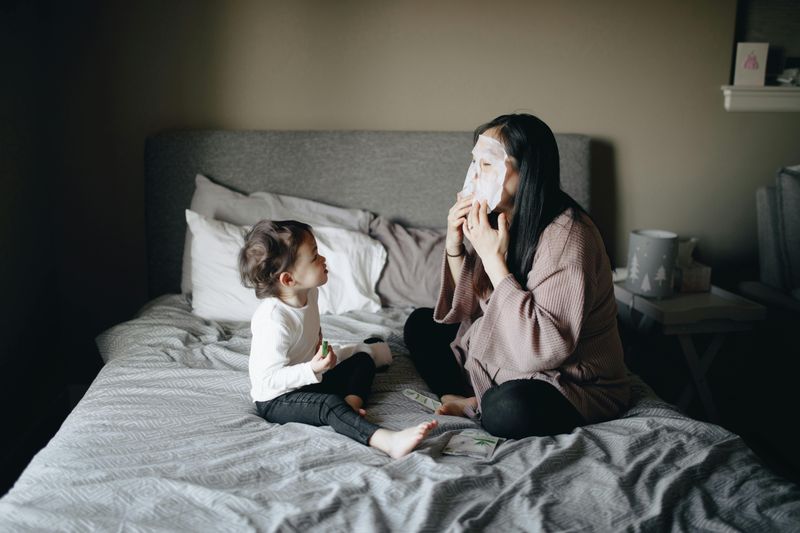Parenting can feel like a rollercoaster of emotions and responsibilities, often leaving everyone in the household feeling frazzled. The good news is that certain habits can dramatically reduce stress levels for both parents and kids. By making small changes to your daily routines and communication styles, you can create a more peaceful home environment where everyone thrives.
1. Stick to Predictable Routines
Children thrive on knowing what comes next. Having regular morning, after-school, and bedtime routines gives kids a sense of security that dramatically reduces meltdowns and anxiety.
When children can predict their day, their brains don’t have to work overtime processing new information. This predictability frees up mental space for creativity and learning instead of worry.
Even on weekends or holidays, try to maintain similar meal and sleep times. The structure might seem boring to adults, but for kids, it’s like an invisible safety net that helps them feel confident and calm throughout the day.
2. Make Sleep a Top Priority
Sleep isn’t just nice to have—it’s essential fuel for emotional regulation. When families prioritize consistent bedtimes and adequate sleep hours, everyone wakes up more patient and resilient.
Create bedtime rituals that signal to the brain it’s time to wind down. This might include dimming lights, reading stories, or gentle music. These cues help both kids and adults transition to sleep mode more easily.
Remember that parents need sleep boundaries too! Set your own bedtime and stick to it instead of using those precious evening hours for endless chores or screen time that keeps your mind racing.
3. Speak With Intention and Calm
Your voice sets the emotional thermostat in your home. When parents commit to speaking calmly even during challenging moments, children learn to regulate their own emotions better.
Take a deep breath before responding to upsetting situations. This tiny pause creates space between a triggering event and your reaction, allowing you to choose words that heal rather than hurt.
Intentional communication means being specific with praise and guidance. Instead of “good job,” try “I noticed how carefully you stacked those blocks!” This precision helps children understand exactly what behaviors work well.
4. Schedule Regular Family Downtime
Many families fill every weekend with activities and errands, leaving everyone exhausted by Monday. Intentionally scheduling nothing is actually something very important!
Block out regular periods on your family calendar labeled “downtime” where everyone can relax without expectations. During these sacred hours, each family member gets to choose quiet activities that recharge their batteries.
Protect this time fiercely from the constant pull of obligations. The dishes might wait, but childhood won’t—and neither will your mental health. These pressure-free zones create space for authentic connection and the simple joy of being together.
5. Share the Load Through Delegation
The mental load of running a household shouldn’t fall on one person’s shoulders. Families thrive when responsibilities are shared according to each person’s abilities.
Even young children can participate in age-appropriate tasks that contribute to family wellbeing. A kindergartner might sort socks, while older kids can prepare simple meals or help younger siblings.
Create visual chore systems using pictures for non-readers. The pride children feel when successfully completing their responsibilities builds confidence while lightening parents’ loads. Remember: perfectly folded towels matter less than the valuable life skills being built through participation.
6. Resist the Overscheduling Trap
Soccer, piano, dance, tutoring—modern kids often have schedules busier than corporate executives! This constant rush creates stress hormones that affect everyone’s mood and health.
Quality experiences matter more than quantity. Consider limiting each child to one or two activities per season, allowing time for unstructured play and family connection.
Watch for signs of activity overload: irritability, sleep problems, or resistance to participation. Sometimes the bravest parenting move is saying “no” to good opportunities so you can say “yes” to a balanced childhood and family life that includes plenty of margin.
7. Hold Regular Family Meetings
The humble family meeting might be your secret weapon against household chaos. Setting aside 15-30 minutes weekly creates a safe space for everyone to speak and be heard.
Start with appreciations—each person shares something positive about another family member. This sets a constructive tone before tackling problems or schedule coordination.
Even preschoolers can participate in family decisions when given simple choices. “Should we have our movie night on Friday or Saturday?” These small moments of agency help children feel valued while teaching crucial life skills in communication, compromise, and problem-solving.
8. Show Kids What Self-Care Looks Like
Children learn self-regulation by watching their parents. When you visibly practice self-care, you’re teaching essential life skills that will serve them forever.
Let kids see you taking deep breaths when frustrated or saying, “I need a moment to calm down.” This normalizes emotional management rather than perfect behavior. Make your self-care visible sometimes—explain why you’re going for a walk or choosing a healthy snack.
Avoid the martyr trap of always putting yourself last. Children who see parents neglecting their own needs learn that self-sacrifice is expected in relationships. Instead, model balanced self-care as a normal, healthy part of family life.
9. Create Simple Organization Systems
Hunting for missing shoes or homework creates unnecessary morning stress. Simple organization systems prevent these daily frustrations before they start.
Focus on trouble spots first. If mornings are chaotic, create a launching pad near the door with hooks for backpacks and a basket for shoes. For homework battles, designate a distraction-free zone with supplies already gathered.
The best systems are so simple even young children can maintain them independently. Picture labels help non-readers return items to their homes. Remember: the goal isn’t Pinterest-perfect organization but functional systems that reduce daily friction points.
10. Practice Daily Gratitude Together
Gratitude transforms ordinary moments into something special. Families who regularly express thankfulness experience fewer conflicts and greater happiness.
Build gratitude into existing routines—share three good things during dinner or bedtime. Even on tough days, finding small bright spots trains brains to notice the positive rather than dwelling on problems.
Gratitude doesn’t mean ignoring real challenges. It simply balances our natural negativity bias with intentional appreciation. This practice builds resilience as children learn to find hope and goodness even during difficult times—a skill that will serve them throughout life.
11. Find Humor in Daily Challenges
Laughter is nature’s stress reliever, releasing tension and creating connection. Families who laugh together develop resilience that helps them navigate life’s inevitable challenges.
Develop inside jokes and silly traditions that become part of your family culture. Maybe it’s wearing underwear on your head during cleaning day or having dance parties when someone feels grumpy.
Model finding humor in mishaps—spilled milk becomes an opportunity to say, “Well, I guess the floor was thirsty!” This teaches children that mistakes aren’t disasters. The ability to laugh at yourself and find joy even in imperfect moments is perhaps the greatest stress-management tool of all.











